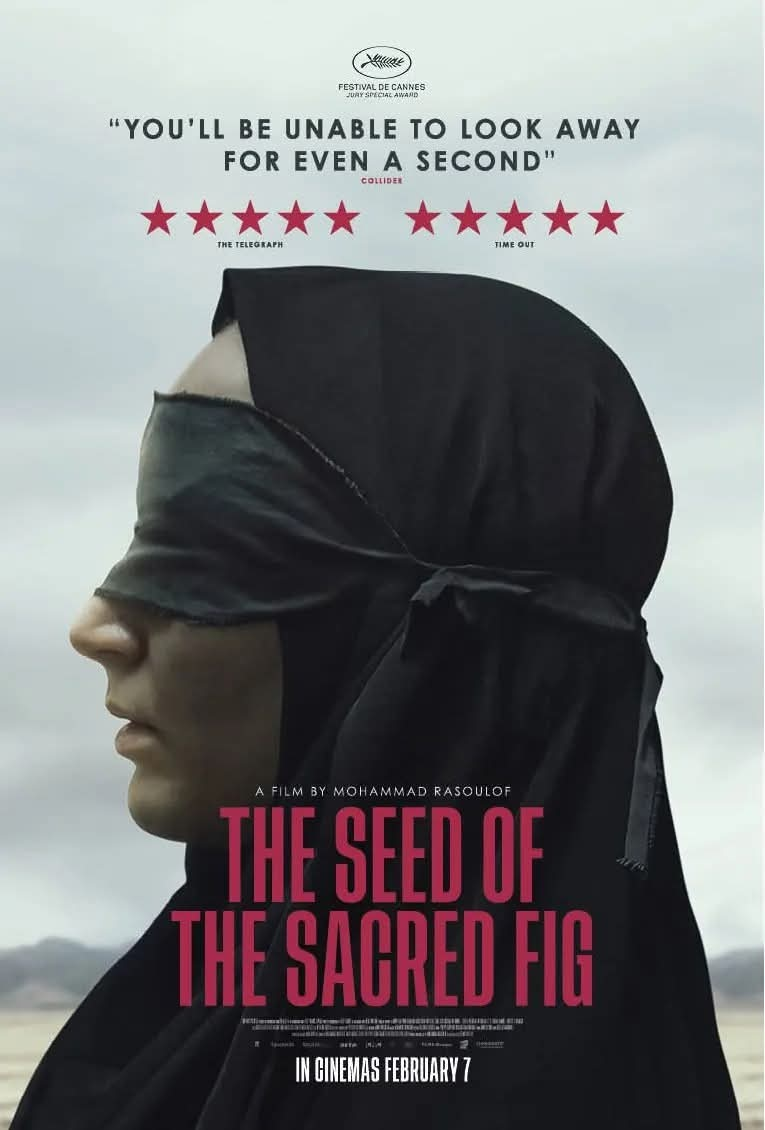
The Seed of the Sacred Fig
|
الاستماع للمقال صوتياً
|
A Tale of Fear and Defiance Under Iran’s Iron Grip
By Ahmed Elmesery
“I learned early in my life that rights are not given to those who are silent about them, and that a person must make some noise to get what they want.”
Malcolm X
In authoritarian regimes, silence is often the only safety, but Iranian filmmaker “Mohamed Rasoulof” chose defiance. “The Seed of the Sacred Fig”, his latest political drama, is a powerful act of resistance not only through its story but also in the way it was made. Shot in secret within Iran during the mass protests of 2022, the film draws clear parallels to the death of “Masha Amini”, a young woman arrested by the so-called “morality police” for removing her hijab. Her tragic death after being detained and allegedly tortured became a global rallying cry.
Global Recognition and Risk
The film premiered at the 77th Cannes Film Festival in 2024, earning the Special Jury Prize one of the festival’s most prestigious honors after the Palme d’Or and Grand Prix, it has also been nominated for Best International Feature at the 2025 Academy Awards, representing Germany. And it was critically acclaimed. The Seed of the Sacred Fig is written and directed by “Rasoulof”, and produced through a collaboration between German and French studios. Despite facing an eight-year prison sentence in Iran, “Rasoulof” managed to escape to Germany and appeared on the red carpet at Cannes.
The story follows Iman, a judge in the Iranian Revolutionary Court in Tehran, His life quickly changes after his pistol goes missing, and he begins to suspect his two daughters and wife. This coincides with protests erupting in the streets of Iran following the killing of a young Iranian woman by the morality police. These conflicts spill over into his personal life, turning it into a battleground filled with turmoil, fear, and doubts, not unlike what is happening on the streets of Iran.
When Faith Becomes a Tool of Oppression
The film takes us on a surreal journey that blends symbolism and religion, freedom and tyranny, doubt and certainty. It begins with a reference to the Ficus Religiosa, a sacred tree in some Asian cultures. Its seeds grow within bird droppings, and when they fall onto another tree, they wrap around it with their roots and slowly choke it until they completely take over. In this symbolic scene, the film points to authoritarian regimes that use religion as a pretext for enslavement, transforming spiritual values into instruments of domination
Iman, whose name literally means “faith,” is not just a character, but a reflection of internal conflict. Once a loving father and husband, he is consumed by the system he serves. Gradually, he transforms into an agent of the very oppression he once stood apart from, mirroring the corruption and control he enforces in court. His home becomes a microcosm of Iran: a place where ideology and fear leave no space for trust or love.
The Camera as a Witness
Rasoulof uses the camera not as a neutral observer, but as a silent accuser. Tight framing, long takes, and muted colors evoke a sense of suffocation. Documentary-style sequences heighten the realism, making the film less a narrative and more a visceral experience. The audience isn’t just watching Iman’s descent, they’re breathing it, trapped in the same confined psychological space.
No Redemption Without Rebellion
The film ends without resolution, but it plants a seed in the viewer’s mind not unlike the one carried in bird droppings. Sometimes, truth falls from the most unlikely places, and new life may emerge.
The final question Rasoulof leaves us with is both poetic and political:
Will this be another sacred fig that chokes what came before, or a tree of resistance strong enough to break the cycle?
